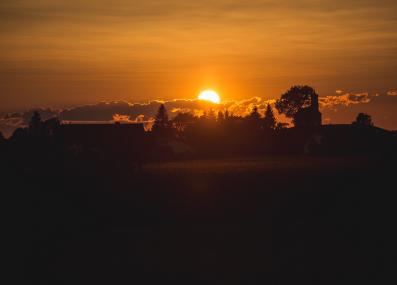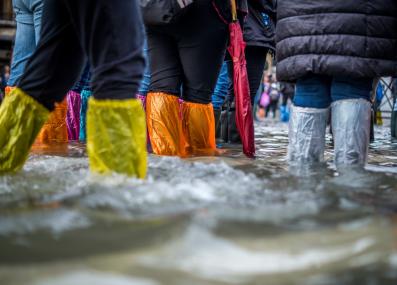Have a question?
What would happen to the climate if we had much lower CO2 levels?
With less carbon dioxide in the atmosphere, the world would be much colder, covered with more ice, and home to sparser levels of vegetation.
October 11, 2023
When the last Ice Age (also called the “Last Glacial Maximum”) peaked around 20,000 years ago, carbon dioxide (CO2) levels were about 180 or 190 parts per million1—less than half of where they stand today. At the time, the world was several degrees colder than in the preindustrial era2 and sea levels were roughly 400 feet below modern coastlines.3 That exposed much more land, which had less plant life on average than our current environment. Glaciers covered a quarter of the Earth's land surface, compared to about 10 percent today.4
“We know pretty well what the climate looks like with lower CO2, because of all the work that's been done to understand past ice ages,” says David McGee, an associate professor in the MIT Department of Earth, Atmospheric and Planetary Sciences. “Very consistently, throughout Earth's history when CO2 has been low, we've had big ice sheets at the poles and overall colder global temperatures.”
Scientists know this because of geologic data, says McGee, such as deposits left by ancient ice sheets and fossils that show where certain plants grew. It’s also what we would expect based on our knowledge of the greenhouse effect. As sunlight filters into the atmosphere and bounces off the surface of the Earth, greenhouse gases like CO2 absorb and re-emit that radiation—and the heat it holds—before it can escape to space. So less CO2 means less heat bouncing around the atmosphere, and colder temperatures here at the surface.
This climate change is also self-reinforcing. When ice blankets more of the earth, it reflects more sunlight back into space: the opposite of the current melting of sea ice that’s leading to quicker warming of the planet today.5
Today’s CO2 levels are actually “nothing special,” according to McGee. In the past, carbon dioxide levels have been much higher than they are today and much lower than they are today. The concerns around climate change are due to the unprecedented pace of change in CO2 levels driven by the burning of fossil fuels, and the fact that we’ve designed our societies around the relatively stable climate of the last few thousand years.
“The CO2 rise at the end of the last Ice Age was about 100 times slower than the CO2 rise that we've had over the last century,” says McGee. “All of the warming that's happening, it's happening much faster, making it really hard for ecosystems and for the Earth system as a whole to respond.”
Thank you to Christina McDermott of Dillingham, Alaska, for the question. You can submit your own question to Ask MIT Climate here.
1 Shakun, Jeremy, et al. "Global warming preceded by increasing carbon dioxide concentrations during the last deglaciation," Nature, Vol. 484, April 2012. doi:10.1038/nature10915.
2 National Oceanic and Atmospheric Administration: "What's the coldest the Earth's ever been?" Michon Scott, February 18, 2021.
3 Lambeck, Kurt, et al. "Sea level and global ice volumes from the Last Glacial Maximum to the Holocene," Proceedings of the National Academy of Sciences, Vol. 111, No. 43, October 2014. doi:10.1073/pnas.1411762111.
4 United States Geological Survey: "How does present glacier extent and sea level compare to the extent of glaciers and global sea level during the Last Glacial Maximum (LGM)?" Accessed October 11, 2023.
5 National Oceanic and Atmospheric Administration: "How does sea ice affect global climate?" Updated September 13, 2023.







